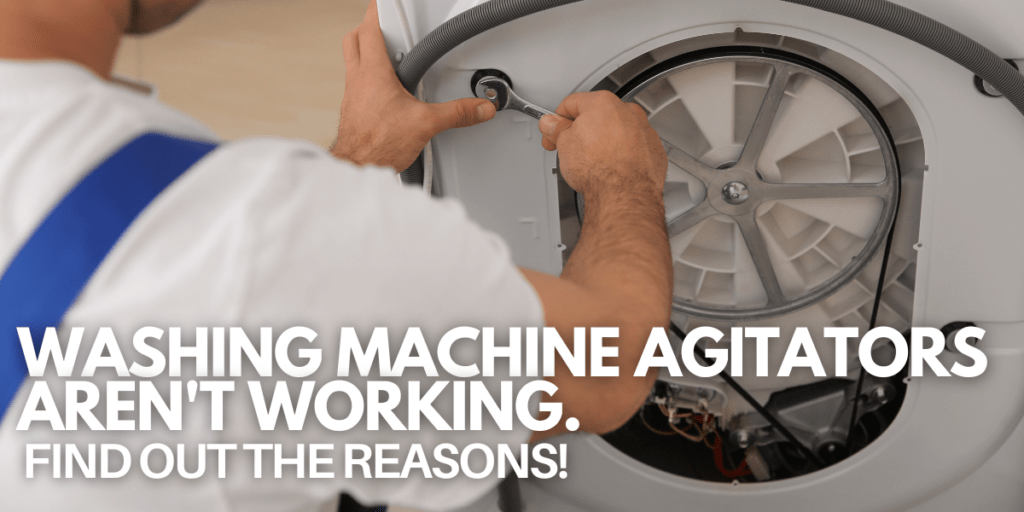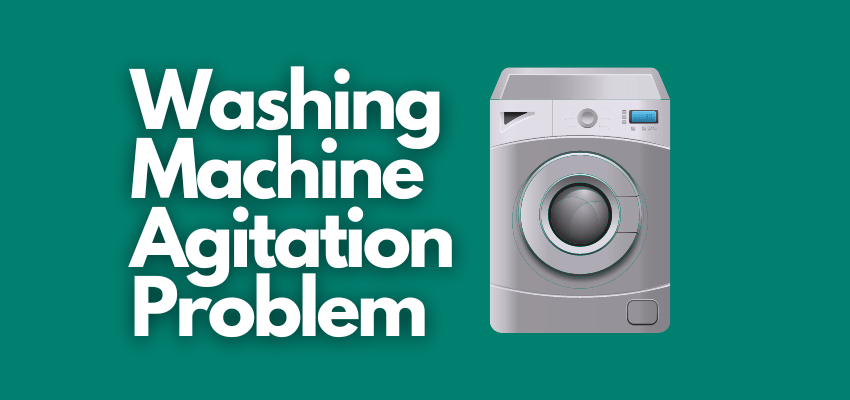Table of Contents
Last Updated on: 2nd August 2023, 08:38 am
The most common reasons why a washing machine might not be agitating are loosened or broken belts, worn-out agitator dogs, and a malfunctioning motor.
A washing machine is an essential appliance that saves us time and effort in doing laundry. However, encountering issues like a washing machine not agitating can be frustrating.
I’ll share some common reasons behind this problem and provide some useful insights into this issue to help resolve it.
Additionally, we’ll share some essential table care tips for parents with babies to ensure a clean and hygienic environment.
Sometimes, cleaning the washing machine isn’t enough. Instead, you need to do a whole lot more than this.
| Disclaimer: As an Amazon Associate, I earn from qualifying purchases. |
Possible Reasons for a Washing Machine Not Agitating

Here are some of the possibilities why your washing machine is not agitating:
Lid Switch
One common reason for a washing machine not agitating is a faulty lid switch. The lid switch is a safety feature that prevents the machine from agitating when the lid is open.
If the switch is defective or not properly engaged, it can interrupt the agitation cycle. Check if the lid is closing securely and consider testing or replacing the lid switch if necessary.
Drive Belt
The drive belt connects the motor to the agitator, enabling it to rotate. If the belt is worn out, loose, or broken, the agitator won’t be able to move.
Inspect the drive belt for any signs of damage and replace it if necessary. Refer to your washing machine’s manual or seek professional assistance for guidance on belt replacement.
Agitator Dogs
Some washing machines have agitator dogs and small plastic or metal components that help the agitator move in one direction during the wash cycle.
Over time, these dogs can wear out or become damaged, resulting in a lack of agitation. Consider inspecting the agitator dogs and replacing them if needed.
Motor Coupling
Motor malfunctioning is quite common in washing machines. The motor coupling connects the motor to the transmission in a direct-drive washing machine. If it becomes worn or broken, the agitator may not function properly. Look for any signs of wear or damage on the motor coupling and replace it if necessary.
Control Board or Timer
In some cases, a malfunctioning control board or timer can cause issues with the agitation cycle. If other potential causes have been ruled out, it may be worth considering a professional assessment of the control board or timer to determine if they need to be repaired or replaced.
How to Fix a Washing Machine That Won’t Agitate: A Step-by-Step Guide
A washing machine that fails to agitate can be a frustrating problem. Fortunately, many issues causing this problem can be resolved with a few simple steps.
In this guide, we will walk you through the troubleshooting process to help you fix a washing machine that won’t agitate. Let’s get started!
Step 1: Safety Precautions
Before beginning any troubleshooting or repair work, it’s important to prioritize your safety. Make sure the washing machine is unplugged from the power source to avoid the risk of electric shock.
Additionally, have a clean work area and gather the necessary tools, which may include a screwdriver, pliers, and replacement parts if needed.
Step 2: Check the Lid Switch
Start by inspecting the lid switch, which is a safety feature that prevents the machine from agitating when the lid is open. Close the lid firmly and listen for a click sound, indicating that the switch is engaged.
If there is no click or the switch is loose or damaged, it may need to be replaced. Consult your washing machine’s manual or seek professional assistance for guidance on replacing the lid switch.
Step 3: Examine the Drive Belt
Next, examine the drive belt, which connects the motor to the agitator and enables it to rotate. Look for signs of wear, such as cracks, fraying, or looseness.
If the belt appears damaged or worn out, it will need to be replaced. Refer to your washing machine’s manual or seek professional help for specific instructions on replacing the drive belt.
Step 4: Inspect the Agitator Dogs
If your washing machine has agitator dogs, these small plastic or metal components may be worn out or damaged, causing the agitator to stop working.
To inspect them, remove the agitator cap or fabric softener dispenser, if applicable. Remove the agitator bolt and lift the agitator out of the machine. Check the agitator dogs for signs of wear or breakage. If necessary, replace them with new ones.
Step 5: Check the Motor Coupling
For direct-drive washing machines, the motor coupling connects the motor to the transmission. If it becomes worn or broken, the agitator won’t function properly.
To access the motor coupling, remove the cabinet or back panel of the washing machine, depending on the model. Inspect the motor coupling for any signs of wear, damage, or breakage. If needed, replace the motor coupling with a new one.
Step 6: Test the Control Board or Timer
If none of the previous steps resolve the issue, it’s worth considering a malfunctioning control board or timer as a potential cause. However, diagnosing and repairing these components can be complex and may require professional assistance.
Consult a qualified technician who can test and assess the control board or timer and provide the necessary repairs or replacements if needed.
Let’s Conclude
By following these troubleshooting steps, you can often fix a washing machine that won’t agitate. Remember to prioritize safety throughout the process, and seek professional help if you’re unsure or uncomfortable with any step.
By addressing the underlying issue, you can restore your washing machine’s agitating functionality and ensure clean and fresh laundry results.




